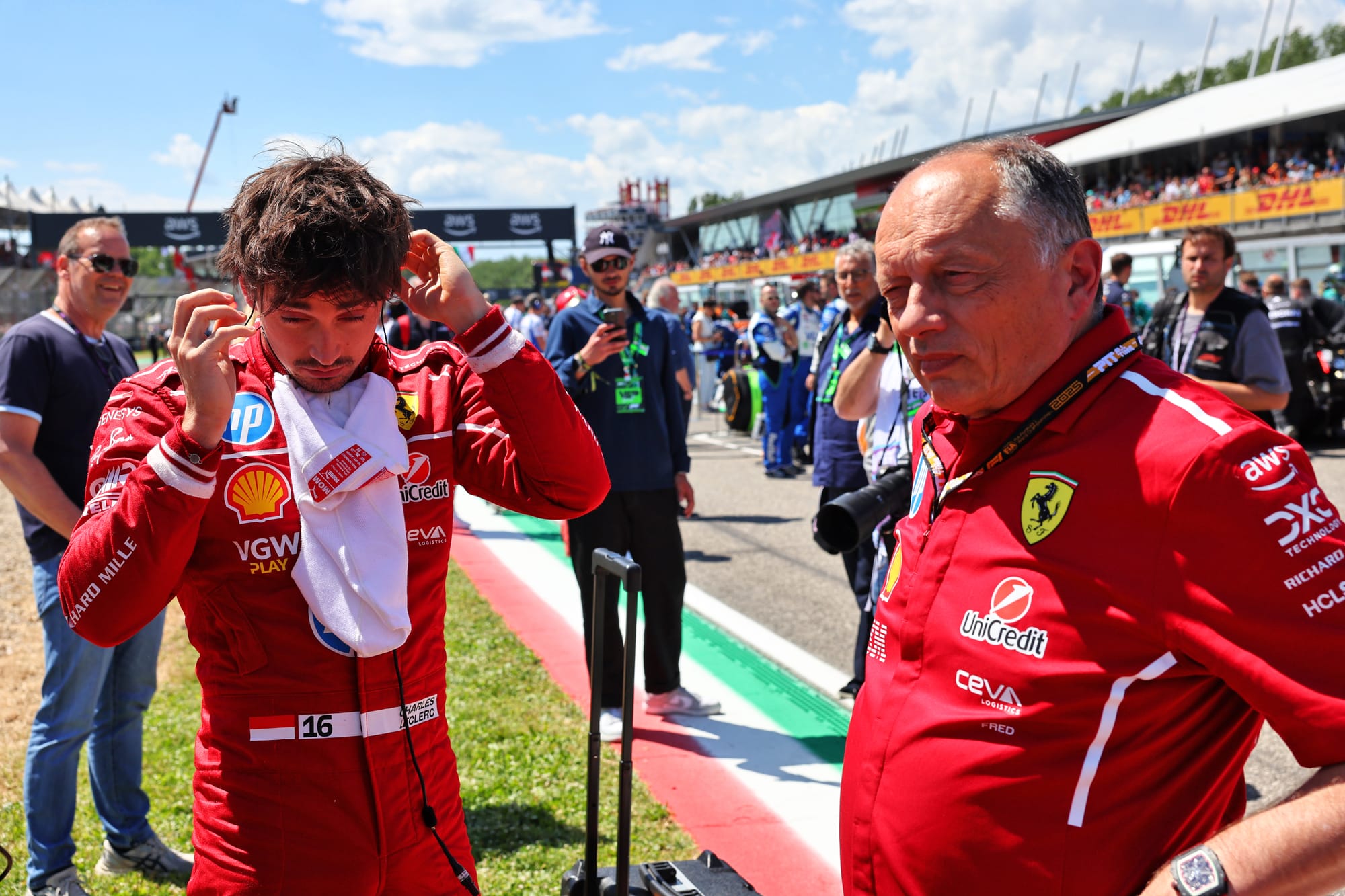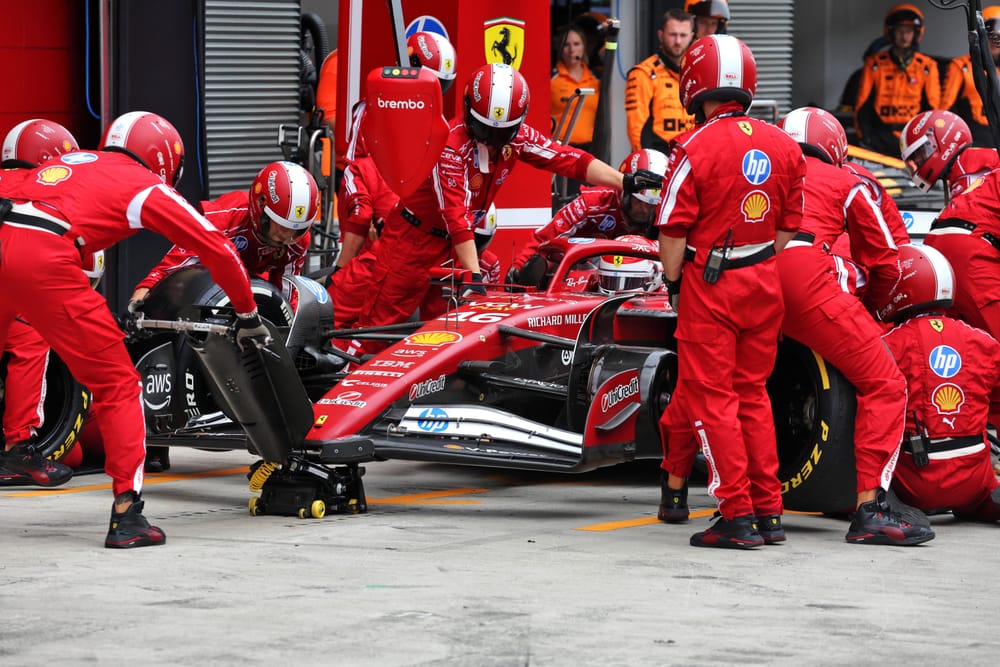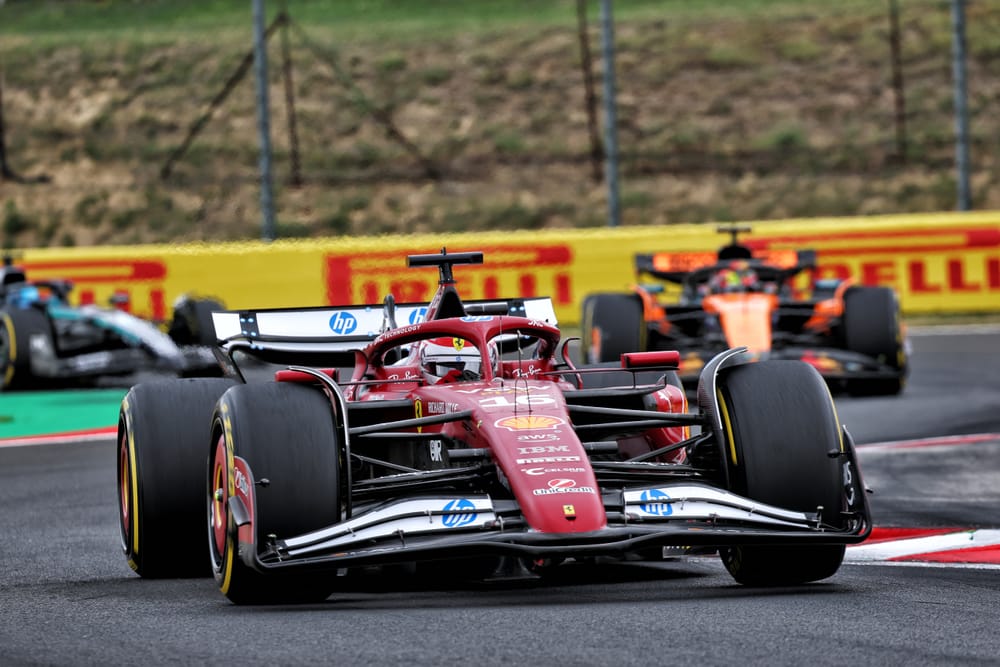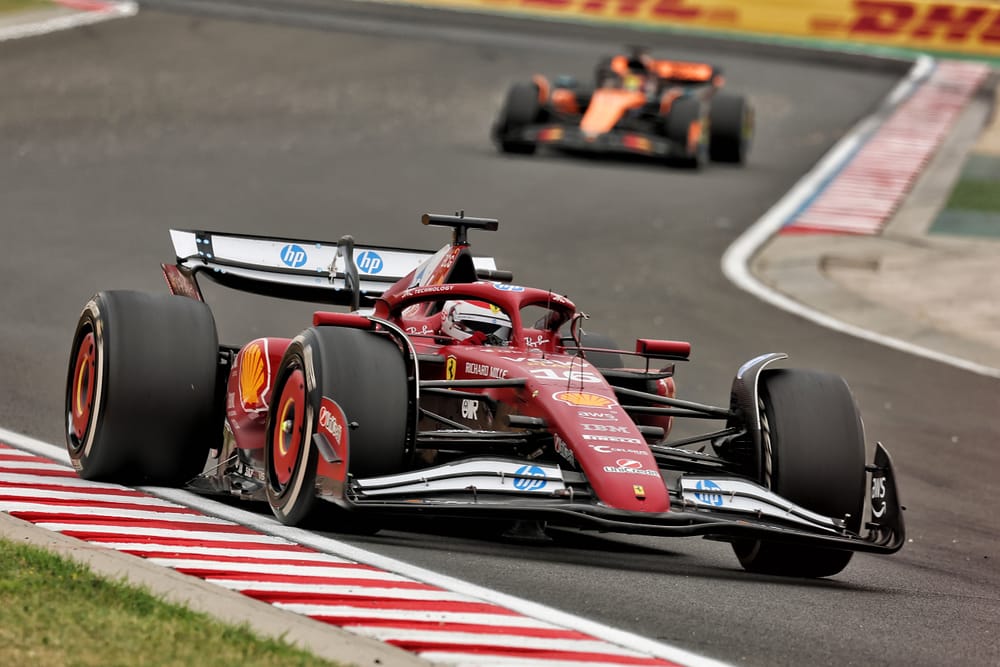Ferrari has outlined the conclusions of its investigation into Charles Leclerc’s mysterious pace collapse in Formula 1’s Hungarian Grand Prix, officially ruling out anything having broken on his car.
Leclerc appeared to have had things under control in the early stages of the Budapest race, having started from pole position and he was able to hold back McLaren’s Oscar Piastri over the opening two stints.
But his afternoon derailed after his final pitstop, when his pace dramatically dropped off, resulting in him falling down the order and eventually coming home fourth.
Neither the Monegasque nor his Ferrari squad had an immediate explanation for what had happened, with team principal Fred Vasseur saying they were baffled about why things had turned so much.
"The situation was quite strange," he explained immediately after the race. "We were under control for the first 40 laps of the race.
“We were in control for the first stint, a bit more difficult for the second one, but it was still manageable. The last stint was a disaster, very difficult to drive.
"The balance was not there. Honestly so far we don't know exactly what's happened. We have to investigate if we have something broken on the chassis side or whatever. At one stage, I thought that we would never finish the race."
Leclerc had suspected that the issue was more related to the chassis rather than being an engine problem, with Ferrari awaiting the return of the car to Maranello before digging into what happened further.
With that work now completed, around the restrictions imposed by the summer break, Ferrari has concluded that nothing broke on the car and Leclerc’s issues in that last stint were almost certainly caused by changes made to his car in his final pitstop.
This is understood to relate to an increase in tyre pressures that Ferrari made for Leclerc’s final set of tyres, plus an alteration made to the front wing.
A Ferrari spokesperson confirmed that the combination of tweaks had an adverse effect on the handling of the car, where the balance shifted in a way that had not been expected.
While the trigger for the changes in the pitstop has not been explained in detail, they were almost certainly prompted by Ferrari needing to protect its plank from wearing away too much, which has been something it has been battling all season.
That was George Russell's theory too, although Leclerc had little interest in commenting on that at Zandvoort.
"I'm not going to comment on that and I don't really mind about what George said after the race," Leclerc said.
"The situation is a lot more complex than what he portrayed, but I'm not really going to comment too much.
"And I think as we've said after Budapest, we are not going to go into the details of exactly what happened, etc. It's something that we are trying to fix and that we are all working towards, but the only thing I can say is that it's a lot more complex than that."

By raising the tyre pressures, this helps lift the car slightly – so that will help avoid the plank striking the ground too much.
However, the downside of doing this is that there is less rubber in contact with the track so there are consequences in terms of pace, balance and tyre temperatures.
Ferrari found out to its cost at the Chinese Grand Prix that the way it runs its car can expose it to the risk of the plank wearing too much, with Lewis Hamilton being disqualified after the Shanghai race.
Speaking before the summer break, Ferrari boss Vasseur had admitted that the fallout of that Chinese disqualification has overshadowed much of its campaign.
“We lost a little bit the ground with the disqualification at the beginning,” he said.
“We had to take a margin. And the sensitivity of the ride height on these cars, it's huge.
"Each millimetre is one position on the grid. So it means that if you start to have to be safe because you are not in full control, then it's impacting massively the performance.”
Leclerc expects the problems to be "around still", but Ferrari is trying to "fix them and to deal with them in a different manner".
After losing the victory chance at the Hungaroring Leclerc feared he'd just lost Ferrari's best win chance of 2025.
Of the first part [of the season] for sure, of the second half, I don't know and I hope that we'll be surprise," Leclerc said when asked if he still believed that was its best win chance.
"Last year, if you would have told me that we could have won Monza, I wouldn't have believed the person that will tell me that. So I hope that we'll be surprised once again.
"But for sure, starting on pole in Hungary on a track where it's difficult to overtake was a very big opportunity and we won't have many this year, considering how strong McLaren are.
"Let's wait and see. I don't really focus too much on the odds, I'm much more focused on what we can do as a team in order to be in the best place to challenge McLaren, which at the moment are very, very strong."





